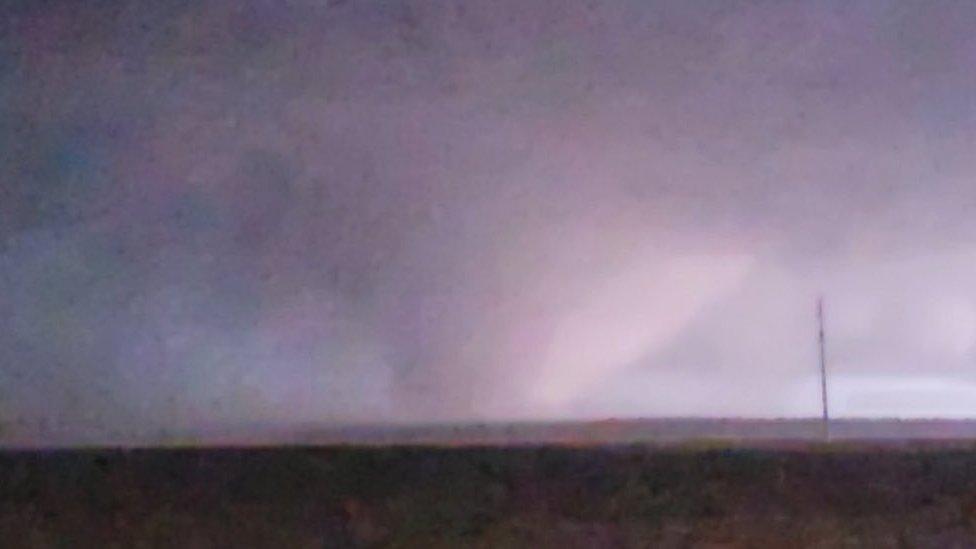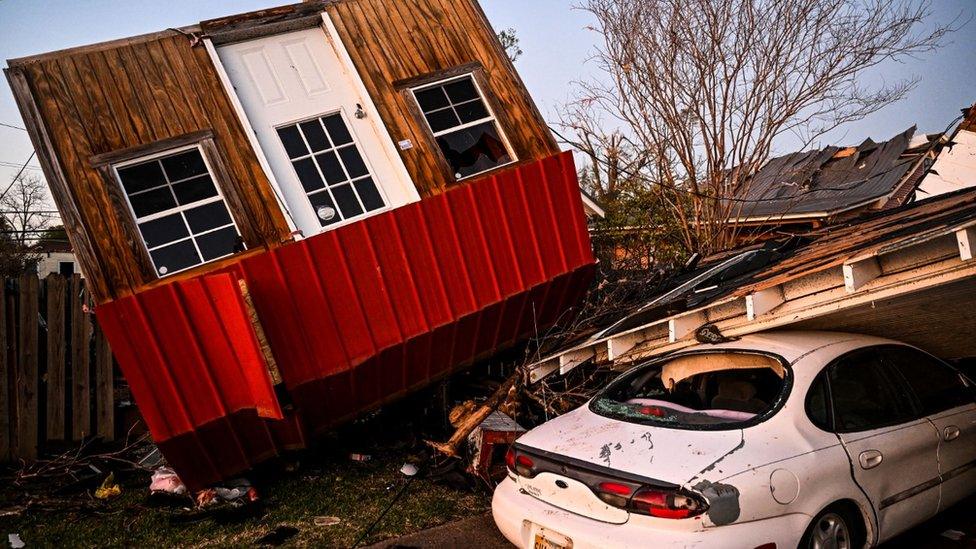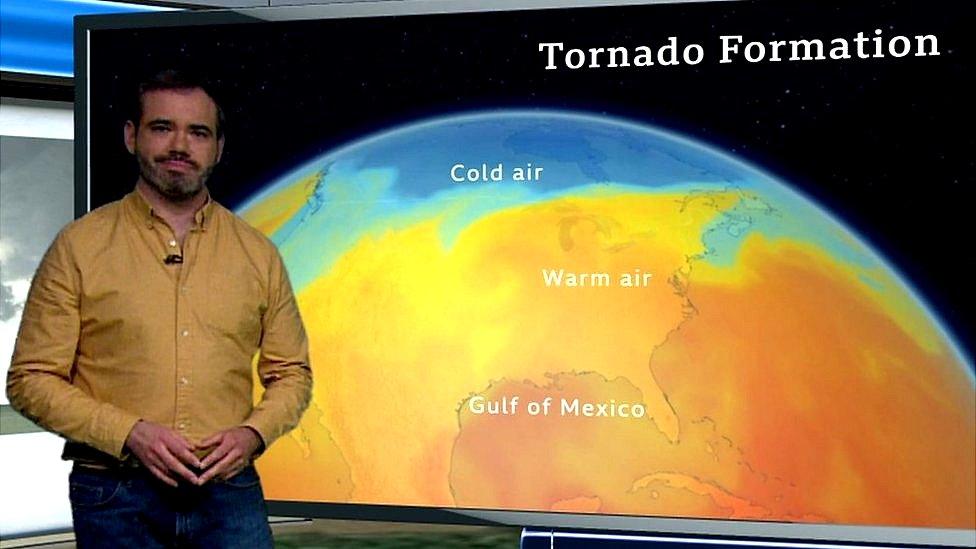Mississippi tornado: Why was it so destructive?
- Published
Watch: Trucks piled on buildings as tornado hits Mississippi
An unusual and powerful tornado in Mississippi has left storm chasers and meteorologists in shock at the devastation it caused.
Officials said that 25 people have been killed as a result of the storm.
The tornado looked enormous as it approached the small town of Rolling Fork, with some calling it a "wedge tornado".
The National Weather Service estimates the storm lasted more than an hour.
"I still can't get over what I saw," said Stephanie Cox, a storm chaser based in Oklahoma who witnessed the tornado as it rolled into Mississippi.
Ms Cox told the BBC that she initially was not able to determine how large or strong the storm would be. But she then heard a massive roar, she said, followed by a lightning strike that illuminated what she described as a "monster" of a tornado.
"I've never seen one that violent or heard one just make that roar sound - that sounds like a train horn coming right at you, " she said.
The NWS estimates the tornado, which began hitting western Mississippi on Friday night after it formed over the Mississippi river, travelled 59 miles (94 kilometres) with a width of three-quarters of a mile, and lasted about an hour and 10 minutes.
It developed from a supercell storm - a rotating storm where the updraft and the downdraft are separated. It is caused by warm, unstable air near the ground and changing speed and direction of the wind at increasing heights.
These storms are some of the least common but among the most destructive, according to the NWS.

The storm has been called a "wedge tornado" due to its visible width as it approached the town of Rolling Fork
Supercell storms are also known for being able to sustain themselves for longer than normal.
"The conditions were just perfect for the storm to last a very long time, and that is usually not common," said Lance Perrilloux, a meteorologist with the NWS in Jackson, Mississippi.
"It caused that tornado to just wreak havoc for a long distance," he said.
Ms Cox and others have described it as a "wedge tornado" - an unofficial term used to describe tornadoes that appear to be wider than their length as they are approaching.
Those types of tornadoes are known for being destructive because their width causes damage over a larger area.
Homes and buildings in Rolling Fork were flattened in the aftermath of the storm, and vehicles were tossed around and destroyed.
Samuel Emmerson, a member of the radar research group at the University of Oklahoma, said the tornado flung debris 30,000 feet (9km) up in the air.

Preliminary findings have registered the tornado a four on the Enhanced Fujita (EF) scale, meaning it had a three-second gust of 166 to 200 mph, Mr Perrilloux said.
He added the tornado lifted up after it rolled through Rolling Fork. It then descended again about 76 miles (122 kilometres) north-east into the town of Black Hawk, Mississippi, where it was downgraded to a three on the EF scale.
That second part of the storm is estimated to have travelled around 30 miles (48 kilometres), the NWS said. Parts of Alabama were also hit by tornadoes.
Another factor that contributed to the devastation in Mississippi is the timing that the storm rolled in.
It hit the town of Rolling Fork around 20:00 local time (02:00 GMT), and the NWS only issued a tornado warning about 20 minutes prior.
Studies have shown that night-time tornadoes can be twice as deadly as those that occur during the day, partly because they are hard to see coming.
Related topics
- Published26 March 2023

- Published26 March 2023

- Published25 March 2023
